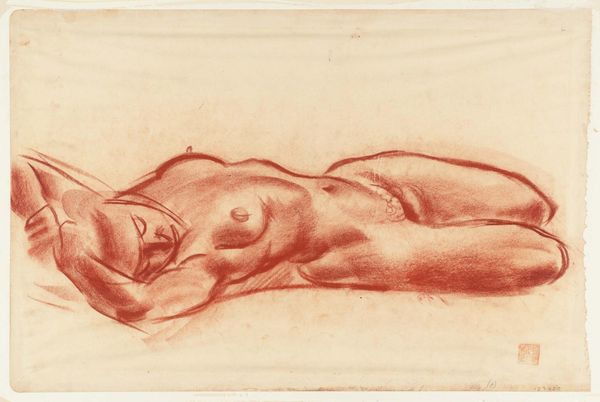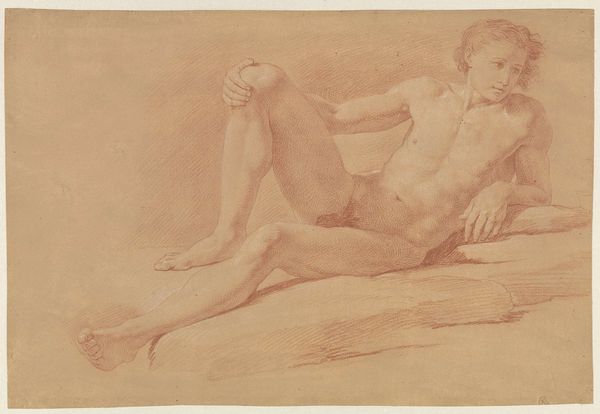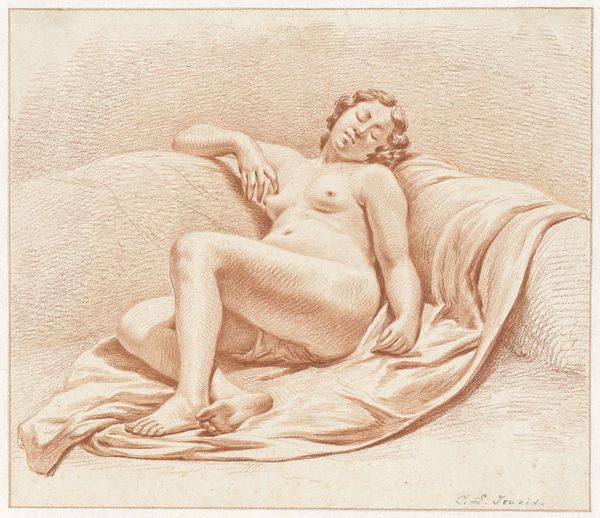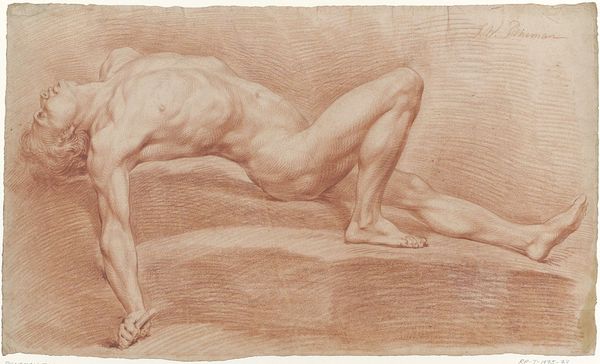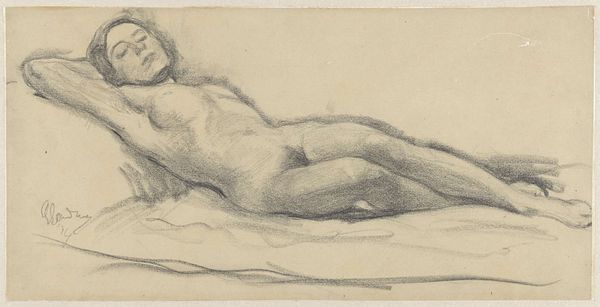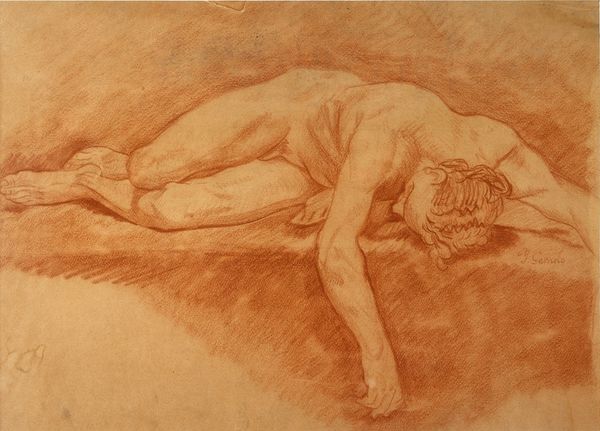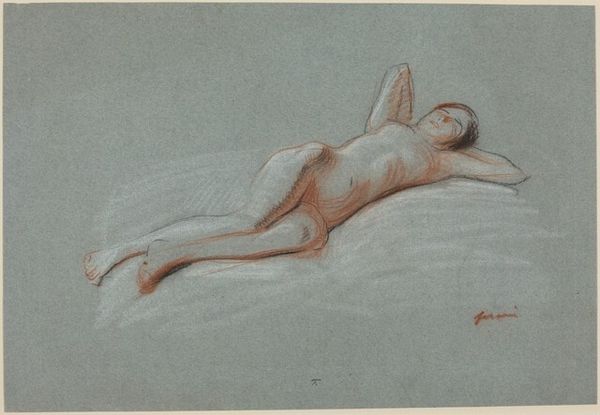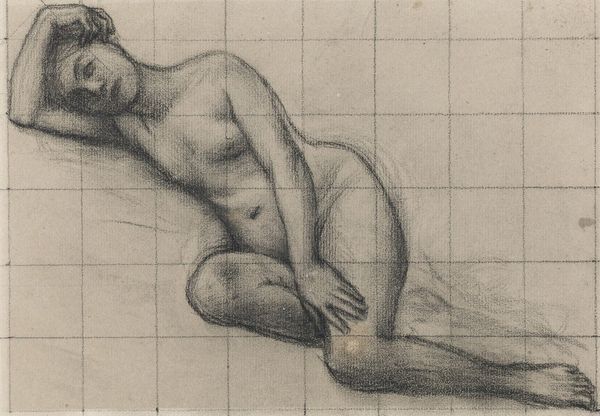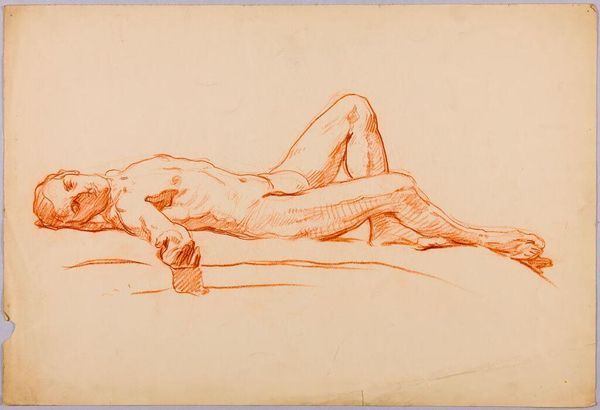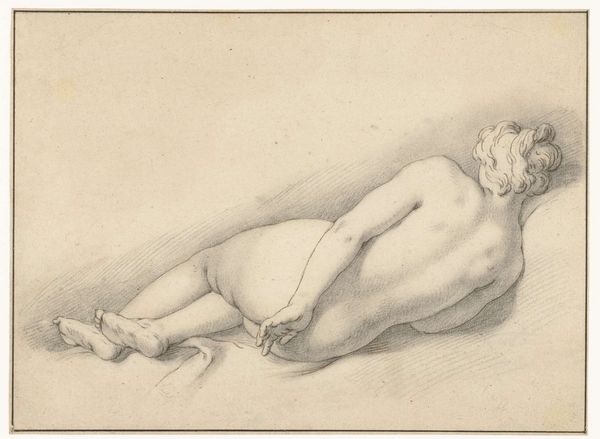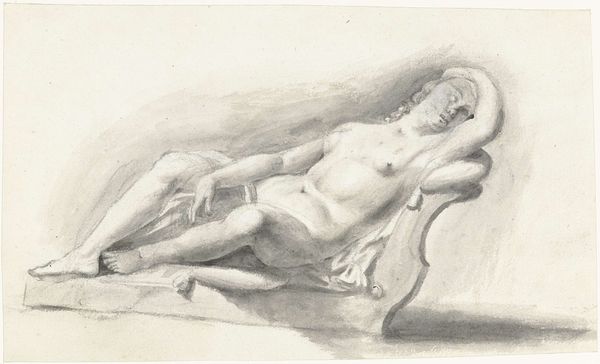
drawing, charcoal
#
drawing
#
baroque
#
charcoal drawing
#
figuration
#
pencil drawing
#
charcoal
#
academic-art
#
nude
Dimensions: height 310 mm, width 470 mm
Copyright: Rijks Museum: Open Domain
Louis Fabritius Dubourg made this drawing of a male nude lying on his back with red chalk on paper sometime before 1775. The process of using chalk is a traditional one, where the artist uses a naturally sourced material to create the image. However, the qualities of the chalk itself influence the drawing’s appearance. It allows for a broad range of tones and textures – seen here in the soft rendering of the figure’s skin and the subtle shading that defines his muscles. The grainy texture of the chalk creates a sense of depth and volume. The method used here - drawing from life - had been important for artists since the Renaissance, but in the 18th century, it gained even greater significance. Academies of art encouraged the practice as essential for mastering the human form, so in this context, the social significance of the image lies in its traditional way of making. By understanding the process and materials, we can appreciate how Dubourg engaged with the artistic conventions of his time.
Comments
No comments
Be the first to comment and join the conversation on the ultimate creative platform.
